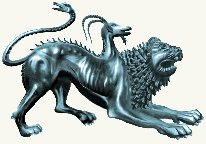All Together Now: Developmental and Ethical Considerations for Biologically Uplifting Nonhuman Animals
George Dvorsky
page 6 of 7
Quite obviously, these frameworks have interesting ramifications for arguments in support of uplift scenarios, but the most potent methodology that can be applied to the issue of bringing nonhumans into the human social fold is the theory of justice proposed by philosopher John Rawls. While concerned with human society, Rawls’s theories reveal a high degree of relevancy to issues of animal welfare, particularly when one ascribes a certain degree of moral worth and personhood consideration to sapient nonhumans.

Image 5: Philosopher John Rawls.
One of Rawls's more important contributions to political theory was his concept of original position in which individuals decide principles of justice from behind a veil of ignorance. The purpose of Rawls’s thought experiment was to weed out any preconceived notions of social position or privilege in order to devise the most fair of social arrangements – the general idea being that ignorance of one’s social position and capabilities will result in the creation of the most fair and equitable of frameworks. Rawls's special claim is that all those in the original position would adopt a risk-minimizing strategy that would maximize the position of the least well off.[1]
Decisions about justice and fairness, argued Rawls, would ultimately lead to consensus on issues of rights and duties and the distribution of social and economic advantages. In regards to how these principles were to be executed, Rawls suggested that they be crafted in such a way as to be of the greatest benefit to the least-advantaged members of society. Considering that nonhumans are completely shut-out from the social contract and carry negligible social standing, they should be considered among the most least-advantaged (what is referred to as the difference principle).[2]
Given the very real potential for biological augmentation some time later this century, the means to better distribute primary goods will eventually come into being and will by consequence enter into the marketplace of distributable primary goods. To deny nonhumans access to enhancement technologies, therefore, would be a breach of distributive justice and an act of genetic or biological exceptionalism – the idea that one’s biological constitution falls into a special category of goods that lie outside other sanctioned or recognized primary goods. Such claims, as argued by Allan Buchanan and others, do not carry much moral currency.[3]
Critics contend that Rawls’s idea was to examine how a just society could be created no matter the socioeconomic or morphological composition of its members. The argument from Rawls, they argue, is that humans need to create an environment that will allow humans to be happy as humans and animals happy as animals.
Regulating Uplift to Prevent Abuse
It suffices to say they will be challenging issues with some potentially intractable problems that may forgo the project altogether. That said, there is one particular issue that does require immediate consideration and one that will add a sense of urgency in regards to the implementation of safety measures and regulation on the eve of biological modification. The issue in question is the creation of partial human hybrids or chimeras.

Image 6: The chimera above is a masterpiece of Etruscan bronze art: Casted around 400 BC, it was devoted to Tinia, the Etruscian Zeus.
The creation of subhumans is within the realm of theoretic possibility. Transgenic organisms are now created with ease, including goats that can secrete spider-silk[4] and pigs that glow in the dark.[5] It is conceivable that human DNA can be intertwined with those of other animals to create a number of novel and bizarre physical forms.
Animals may also be engineered to have specialized physical or cognitive characteristics while lacking certain neurological faculties. Theoretically, such creatures could be designed for specific tasks, such as manual labour, dangerous work, or as sex trade workers -- and at the same time be oblivious to the demeaning or hazardous nature of their work. For all intents and purposes, these would be happy slaves.
This is a repugnant possibility and an affront to humanitarian values. Interventions designed to deliberately constrain a sentient organism such that it is incapable of empowered participation in the broader social community is grossly unethical and should be considered illegal. The ultimate goal of animal uplift is the creation of equal social partners and not a species to be subjugated. The most sure-fire way to avoid this scenario is to extend legal personhood rights to those worthy of such consideration. As a word of warning, should humanity, for whatever reason, decide that animals are not worthy of personhood status, and should the human species not venture down the path that would lead to eventual co-existence with nonhumans as intellectual and social equals, the doors to abuse would be left wide open. Animals would continue to be looked upon as property and as the subjects of our experimentation and petty desires.
Footnotes
1. Rawls, Theory of Justice, 11. (back to top)
2. Rawls, Theory of Justice, 303. (1971) (back to top)
3. See Buchanan et al, From Chance to Choice. (back to top)
4. "GM goat spins web based future", BBC News , August 21, 2000. (back to top)
5."Taiwan breeds green-glowing pigs", BBC News, January 12, 2006. (back to top)